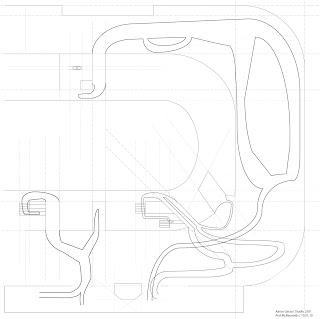1. How does Peter Zumthor talk about the "Magic of the Real" and explain how this compares, in terms of the subtleties, to Michael Benedikt's "Architecture for Reality"?
Peter Zumthor idea of “Magic of the Real” is about the experience someone has when they are inside of a building or setting. The mood building made by the space available to people. Benedikt’s “Architecture of Reality” is how a person feels in the presence a buildings, space, mass, and composition.
2. Material Compatibility, Temperature of a Space and Levels of Intimacy are some conditions that both Peter Zumthor, in “Atmospheres”, and Richard Serra, in “Weight and Measure”, make a point of articulating when consider space. Where in their explanation of these overlapping conditions are they similar and where do they differ?
Both Serra and Zumthor both deal with the weight of the materials and how it effects your structure, and how this may cause the object or structure to react with peoples sense of space. How it will effect someone’s movement around the object or how the may stand in relation to it. What differs in the ideas of both these architects is how materials temperature can change someone relation to the object.
3. Zumthor looks towards experiential conditions when creating architecture, what are other methods architects use when generating architecture and what is the corresponding building?
Other methods of experimenting and generating architecture can come in the form of modeling before building. Richard Serra for example worked modeling on a 1 - 1 scale before generating his work, so he could see someone’s reaction to a piece he had been working on.
4. For Zumthor at the end of the day, after figuring use, sound, place, light and the other listed conditions, if the coherence isn’t beautiful the process is started again. Beauty is simultaneously subjective for the individual, as held “in the eye of the beholder”, and universally recognizable. Define your subjective understanding of what beautiful architecture is.
Beautiful architecture is something that cannot fully be explained, rather it is something that must been see in order to get a full effect of why something can be considered beautiful. As Zumthor describes it, is something that even with all the right conditions calculated and brought to a reasonable understanding, by taking a look at the building or structure you can tell if it is beautiful or not. It is something that is felt about the individual in the presence of a structure, that something just keeps your eye or your senses fixated on it . More often than not you cannot realize if something is beautiful or not without first being able to bring it into the physical state, and then looking back on it you will be able to decide if it is considered beautiful.































